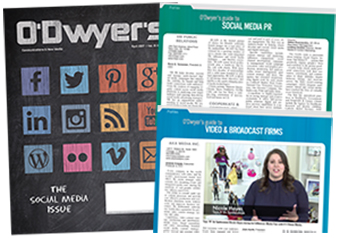|
|
Born between 1982 and 2002, Millennials make up about 25 percent of the population and will replace the “Baby Boomers” once they retire. Growing up in the digital age, this generation is known for their frequent online purchasing habits and strong social media usage. The need to stay connected is what feeds the digital marketing world, fueling Facebook Ad creation, Snapchat video advertisements and Instagram Live Promotions. With a mobile device in hand at almost all times, it’s easy to connect with brands and influencers all over the world.
|
|
Here are a few key traits that may align with your current customer base:
• More than 55 percent of Millennials would rather receive product recommendation from online influencers over experts.
• Millennials take things personally. They identify with brands more emotionally than any other generation.
• According to the Millennial Consumer Study, 37 percent of Millennials are willing to pay higher prices to support a brand they believe in.
• Millennials value brands and services that are problem solvers. Useful is the new black.
Are Millennials your main demographic?
In an ideal situation, we want everyone to purchase our products or require the services that we provide. Realistically, every product/service has a target audience to which they need to advertise. Identifying your audience attributes may take some time, however, and focusing on the right audience is a very important stepping stone that should not be missed. Marketing to Millennials should be successful if your product is environmentally friendly, boasts eye-catching designs or your services solve relevant social problems. For example, a Kickstarter featuring a tent that can be worn as a jacket complete with a compatible cell phone charger, will appeal to Millennials as being trendy and environmentally friendly but still allowing them to stay connected.
Develop strong social media campaigns
Traditional marketing is a thing of the past. People ages 18-34 aren’t as adept at responding to Native Marketing. Rather than using traditional ad practices, try sponsored posts. These types of posts gain popularity through user engagement and often feature links to blog posts vs. direct website links. Sponsored posts have overthrown banner ads, text-only PPC ads and rich media. Sponsored posts often work in conjunction with PPC ads to offer maximum results within your marketing efforts.
Effective social media campaigns contain tailored social advertisements designed specifically to reach your target audience; an enticing content mix of photos, videos and articles; consistent follower engagement; influencer marketing; and analytical tools to measure the growth and effectiveness of current campaigns.
Social advertisements
When developing social ads and content, create ads that are mobile friendly, with graphics that are easily deciphered on small screens. If available, test the ads on several different smart devices to see if ads are translating correctly to consumers.
Use visually appealing, helpful or funny content with your ads to increase your web traffic. This generation is most receptive to learning helpful hints that solve current social problems. If user generated content is available, utilize that as much as possible. Millennials trust influencers for honest product reviews and social proof is often needed to close the sale.
Allocate a test budget and scale your best performing creatives. Facebook’s advertising tools allow you to set up ads based on a variety of different parameters. You can narrow your audience to the smallest niche or broaden it to serve to as many users as possible.
Stunning and shareworthy content mix
Creating quality content isn’t just repurposing photos viewed on other pages; extensive analytic research can be used to identify what pieces of original graphic content will yield the most shares. The objective is to have the content produced shared via popular social networks such as Facebook, Instagram and Twitter.
These points will help you develop an effective content strategy geared towards Millennials:
Content with a Purpose. Millennials want to make a difference. Inspiring content will keep them engaged and fulfill their need to enlighten the world. Try using inspirational quotes, videos or articles that relate to your brand.
Tell a visual story. Connect with their emotions. Create authentic content with a strong social focus. Reviews from current product users can be repurposed into testimonial graphic content.
Attention is key! Per recent studies, Millennials spend an average of 1-3 seconds engaging with video content. Videos must grab their attention from the first few seconds. Integrate this by asking teaser questions in the caption of your video and they must watch to find the answer.
Make them laugh! If you can be quirky and lighthearted within social posts, go for it. Pushing the edge of the envelope is what forces them to engage.
Engaging with followers
After you’ve crafted an incredible array of content to share, you should begin to gain interaction from your followers. This participation should not be ignored. Engage with Millennials frequently to earn their trust. If you place a personality with your company, they will feel as if they’re speaking to a friend as opposed to being sold a product. Answer questions and comments using relevant hashtags and keep the conversation moving. The longer the thread, the more likely they’ll purchase the product and recommend it to friends and family.
Influencer marketing
Increasing engagement is much more effective when paired with Influencer Marketing. More than 35 percent of current online influencers are Millennials. This form of advertising takes word-of-mouth to the next level. When sourcing influencers, you want to look for individuals who have gained popularity on the Internet. This can be based on celebrity status, video views, blog followers, etc. And more importantly, individuals who align with your brand’s overall mission statement. Find quality influencers through research. Visit each prospective influencer’s social channels, review comments, blog and social posts to verify that the interaction between the influencers and their followers is apparent.
With the ability to purchase followers, analyzing the level of engagement is imperative to the quality of your brand’s influencer marketing efforts.
Reviewing social analytical data
After applying everything that was mentioned above to your current social media marketing campaign, it’s important to measure your results. Each social channel has native analytical tools to provide basic social listening data. To get a more in-depth look at your audience, Google Analytics can help you track conversions, referral traffic and the average of monthly visits to your website from social media. Use these metrics to draft social content, optimize web pages for mobile users and retarget social advertisements, just to name a few.
Marketing to Millennials can be tricky, but it’s not impossible. Creating a marketing plan, listening to your audience and understanding the basic practices of social media will provide you with a loyal customer base for generations to come.
***
Galina Rogers is a social media specialist and works out of Marketing Maven’s Los Angeles headquarters.

 Galina Rogers
Galina Rogers

 What if companies could harness the fury of online outrage into a force for good? This is precisely where companies can start turning the trolls into brand champions.
What if companies could harness the fury of online outrage into a force for good? This is precisely where companies can start turning the trolls into brand champions. Audiences interacted with brand content far more often on Facebook and Instagram in 2023 than they did via X (formerly Twitter), according to a report that tracked engagement trends across different social networks.
Audiences interacted with brand content far more often on Facebook and Instagram in 2023 than they did via X (formerly Twitter), according to a report that tracked engagement trends across different social networks. Can public relations help counteract the dissension fostered by the power of digital platforms to spread hate, fear and confusion?
Can public relations help counteract the dissension fostered by the power of digital platforms to spread hate, fear and confusion? The number of Americans who get their news from TikTok has quadrupled in the last three years, according to a recent Pew Research Center report.
The number of Americans who get their news from TikTok has quadrupled in the last three years, according to a recent Pew Research Center report.


 Have a comment? Send it to
Have a comment? Send it to 
No comments have been submitted for this story yet.